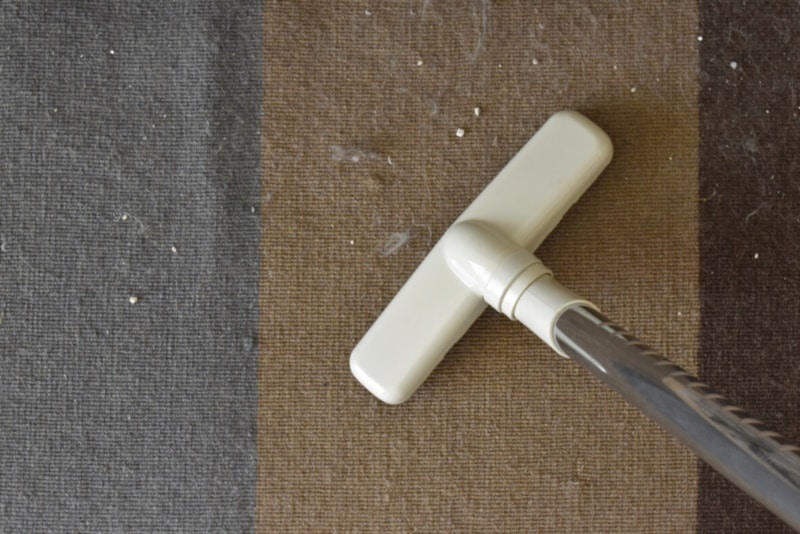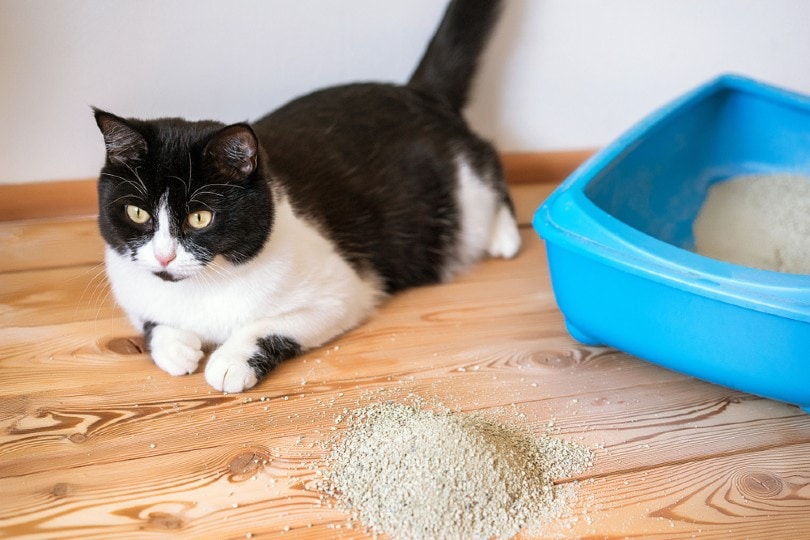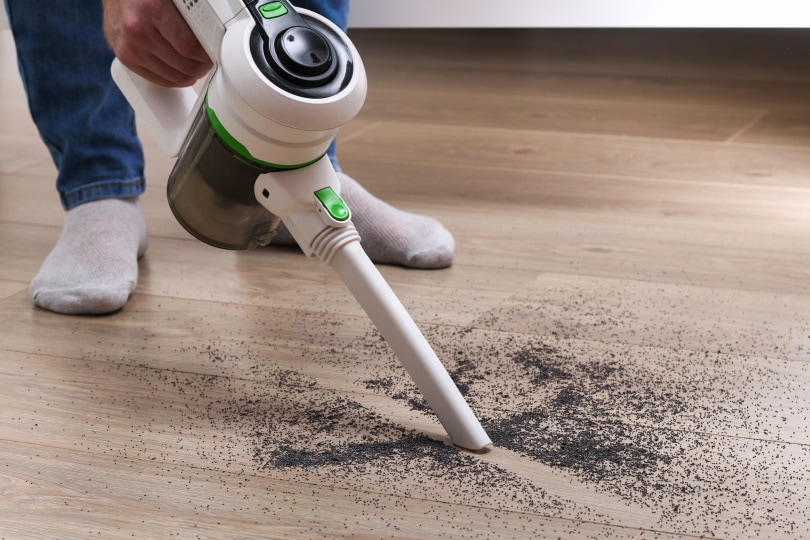
Cleaning messy cat litter can be tedious, so using a vacuum cleaner naturally feels like the faster and more effective way to get things done. Although you technically can vacuum cat litter, there are several drawbacks to this cleaning method worth considering.
If you are looking to ditch the dustpan and vacuum your cat’s litter instead, this article will tell you whether it’s safe or should be avoided.

Vacuuming Cat Litter: Is It Worth It?
It is generally not a good idea to use your regular household vacuum to clean soiled or large chunks of cat litter. However, you can still vacuum small pieces of cat litter or its leftover dust particles after scooping up the larger chunks. It is better to use a separate vacuum that will only be used to clean litter rather than your regular household vacuum. There are specific vacuum cleaners available that can handle suctioning cat litter with fewer risks.
There are several reasons why you do not want to use a regular household vacuum on cat litter. Cat litter could damage the delicate mechanisms of your vacuum cleaner and leave scratches or punctures in the filter bag. Fine cat litter can clog the vacuum cleaner’s filter and need to be cleaned more frequently.
Furthermore, soiled cat litter can leave behind unpleasant urine smells that can be difficult to eradicate. The urine left behind on the cat litter can leach into the porous filter bag, creating a stench every time you switch on the vacuum.


Pros and Cons of Vacuuming Cat Litter
Let’s take a look at the pros and cons of vacuuming cat litter.
What to Know Before Vacuuming Cat Litter
If you choose to vacuum cat litter but don’t want to risk damaging your main household vacuum, opt for a pet-friendly vacuum instead. Most pet-friendly vacuums are heavy-duty and can handle the smells left being from tracked cat litter, fur, and debris.
Pet-friendly vacuum should ideally be used solely to clean your cat’s litter messes and not around the rest of your home. Alternatively, there are handheld vacuums for pets that are safe for use on cat litter and more budget-friendly.
If you are planning to vacuum wet or soiled cat litter, it is better to use a wet/dry shop vacuum cleaner instead. You want to avoid using a regular household vacuum for anything wet, as it is not designed to suction it. Plus, wet cat litter can create a musty smell inside the vacuum and may contribute to mold growth.

How to Vacuum Cat Litter Safely
Here’s how you can safely vacuum cat litter from different surfaces, such as carpet, tiles, and hardwood flooring.
1. Scoop the larger Chunks
Start by scooping up the larger chunks of cat litter and disposing of it. Using a soft, fine-bristled brush and scoop is recommended for carpets and hard flooring. If there are only a few small pieces of cat litter lying around, you can skip to the next step.
2. Use a Pet-Friendly Vacuum
Use a pet-friendly vacuum to suction up smaller pieces of cat litter and remove any lingering litter particles. You may need to go over the area a few times before it is completely clean. Some types of cat litter are very dusty and can get trapped in carpet fibers.

3. Clean the Vacuum Filter
Empty the vacuum filter or bag into a biodegradable trash bag and an enclosed garbage can.

Alternative Methods for Cleaning Cat Litter
Other than a vacuum cleaner, you can clean up cat litter using the following tried-and-trusted methods.

Conclusion
You can vacuum cat litter with a pet-friendly or dry/wet shop vacuum cleaner. Cat litter is usually too large or smelly to be suctioned into a regular household vacuum. There is also the risk that fine dust particles from certain cat litter can clog the filter bag or damage the delicate mechanisms in the vacuum.
Regardless, it is a good idea to scoop up excess cat litter before you vacuum it.
Featured Image Credit: Maliflower73, Shutterstock

